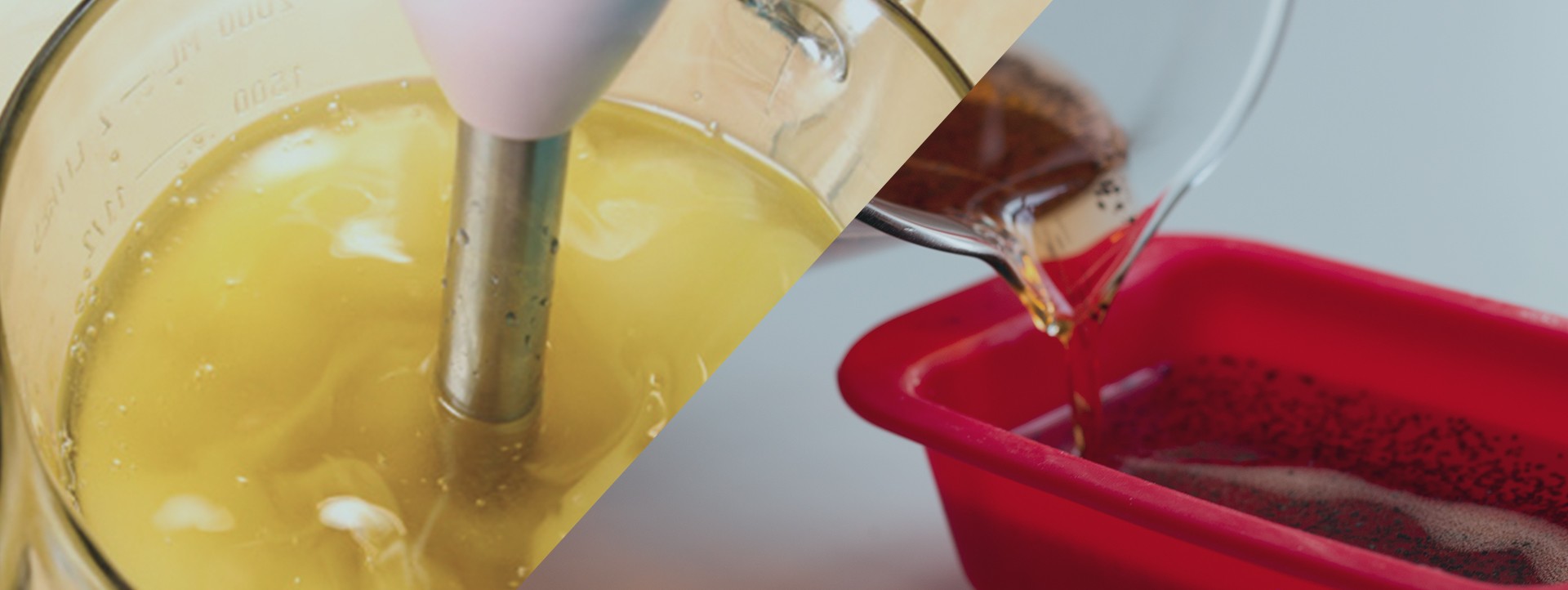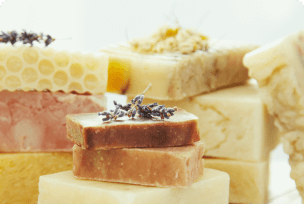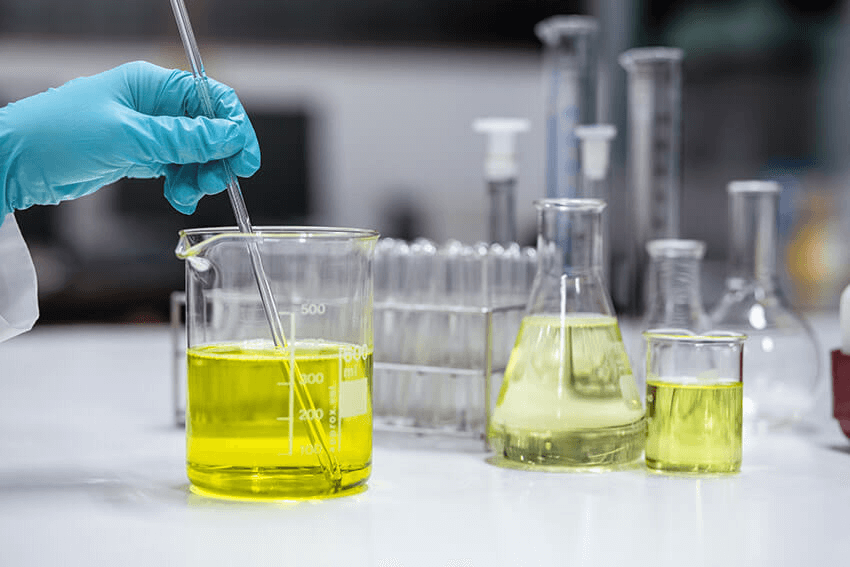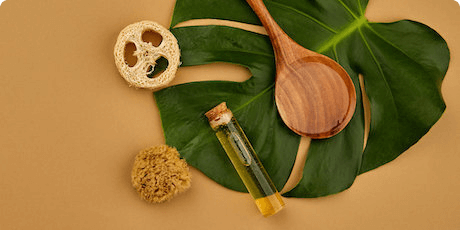Tim uses data and trends from the likes of market-leading brands, manufacturers and research companies to understand where customers should focus on future new product development.

Cold process soapmaking has long been considered to be the “natural” way to make soap. But is there really a natural Melt and Pour alternative? Michaela Daubney from Stephenson thinks the answer is ‘Yes’, and shares her thoughts in a recent article written for ‘Cut to the Trace’ eZine - a quarterly publication of the HSCG. Below is a copy of the article, but you can download a copy of the publication here if you’re registered - courtesy of the Handcrafted Soap & Cosmetic Guild®
From its humble beginnings used by the ancient Romans, soap is now available globally – in drug stores, supermarkets, apothecaries, and online; and it’s big business.
Why? Because as a society we like to be clean! In the United States last year, the retail value of ‘Soap, Bath & Shower Products’ increased by 2.8%, with a total market value of $5.7m. Soap making has soared in popularity in recent years as a fun and creative hobby that can be enjoyed by adults and children alike. It brings out your inner artisan, and many handcrafters are turning their hobby into a business due to increasing consumer demand for handmade, natural products. One of the most popular soap making methods is “Cold Process.”
Image Credit: Soap Queen
Cold Process soap making is the traditional method where people can make their own soap from first principle ingredients. Oils, butters or fats are mixed with an alkali, such as Sodium Hydroxide or Lye, and left to cure for up to 4 weeks. The chemical reaction is called “saponification,” where the length of time required allows the oils to react with the alkali without the use of heat - hence the name ‘Cold Process’. Cold Process soap making requires patience and skill; it’s a detailed process where the soaper must select, weigh and calculate the amount of oils and Sodium Hydroxide required to create just the correct reaction to produce a beautiful soap. There is however, some caution to be given to cold process soap making. It’s a tricky process and handling harsh chemicals such as Sodium Hydroxide should not be taken lightly.
We admire the soaps created using Cold Process as well as the skill involved – but, there is an alternative way to make soap by using ‘Melt & Pour’. These pre-made soap bases eliminate the ‘saponification’ process – so all you need to do is melt, mix, and pour to create a wide variety of different finished products.

Melt & Pour vs Cold Process – What’s the Difference?
We’ve listed some of the pros and cons of Melt & Pour and Cold Process soap making below:

Can you really make natural Melt & Pour?
This is a question we get asked on a regular basis, and the answer is very much “Yes!”
Our Crystal Natural HF is a natural vegetable-derived Melt & Pour soap base, which is SLS and SLES free. It also contains no propylene glycol and no surfactants. This creates a soap bar that is very similar to CP soap.

How do we do this?
Firstly, we analyse the carbon chain breakdown in fatty acids and oils to determine the best ratios to create our base. For a high foaming but solid bar, we need the perfect blend of C-12 and C-18. For example, these carbon chain lengths are found most in coconut oil and shea butter. We use natural fatty acids in Crystal Natural HF, which are derived from these vegetable oils. The carefully selected fatty acids in this product are stearic acid (C-18), lauric acid (C-12) and oleic acid (C-18:1). Stearic acid is chosen because this gives hardness to the bar, and this is simply down to the melt point of the Sodium Stearate soap that is created.
Crystal Natural HF has no added surfactants in the formulation; however, Surfactants are what creates foam, and foam is associated with cleansing, therefore Lauric Acid is added to provide a ‘foaming soap’ in the form of sodium laurate. However, the balance of stearic acid and lauric acid isn’t enough to create a high foaming base. We all know if soap is too hard it won’t foam. This is why oleic acid is introduced to soften the soap base to enable the foam to be created when washing.
 "Oleic acid is naturally derived from sunflower oil, and is a fluid fatty acid."
"Oleic acid is naturally derived from sunflower oil, and is a fluid fatty acid."
Once this fine balance of fatty acids has been chosen and formulated, we carefully calculate the level of sodium hydroxide required to saponify the fatty acids. This is done based on the molecular weight of the combined fatty acids and their corresponding saponification values. The saponification reaction takes place in a solution of water and glycerine. Glycerine is a natural sugar compound that is used as a ‘humectant’ in soap. A humectant is a substance that is hygroscopic, which helps to keep things moist and is ideal for our skin. Because we want our Melt & Pour soaps to be incredibly moisturising, we add 20% glycerine into our formulations. It is this blend, alongside the soap fraction of our formula that helps handcrafters melt, pour and customise a soap bar. Along with glycerine, we use another humectant called Sorbitol to enable our bases to melt so well without the use of mono propylene glycol.
 "After each batch is complete, we carefully test the sample to ensure that the base is FFA (Free Fatty Acid), and that there is no free lye (FA – Free Alkali). This is done by an acid-base titration method, where neutralisation is indicated by Phenolphthalein."
"After each batch is complete, we carefully test the sample to ensure that the base is FFA (Free Fatty Acid), and that there is no free lye (FA – Free Alkali). This is done by an acid-base titration method, where neutralisation is indicated by Phenolphthalein."
Final Thoughts
There is a lot of debate around Cold Process and Melt & Pour soap making. The truth is, they are both great ways to make soap! For those who enjoy measuring, weighing, and saponifying – we salute you! It’s no easy thing that’s for sure. However, we encourage you not to make the assumption that Melt & Pour is “nasty and full of chemicals.” We continue to innovate, and if you want to try Melt & Pour soap, but don’t think it’s ‘real’ soap, or that it’s not ‘natural’ - we can assure you it is! Natural Melt & Pour does exist - and we make it!
Melt & Pour can be produced in many different ways, using natural ingredients, whilst also providing you with more flexibility, quicker production and an opportunity to scale your hobby into a brand and a business.
Contact us to find out about the most natural melt and pour bases to help you create fun soaps!
 "Let’s be honest, curing takes some time; so always be sure to check your Cold Process soap, make sure it’s in the right range of pH, and that all of your lye has reacted, so that you can stay safe and have fun!"
"Let’s be honest, curing takes some time; so always be sure to check your Cold Process soap, make sure it’s in the right range of pH, and that all of your lye has reacted, so that you can stay safe and have fun!"



























